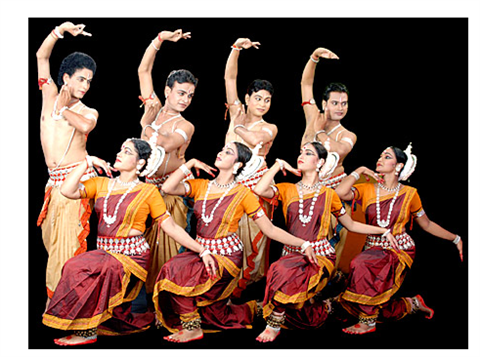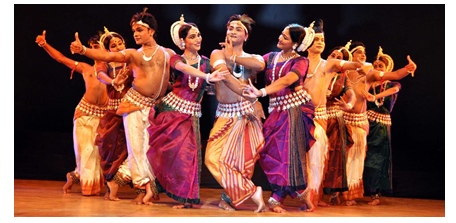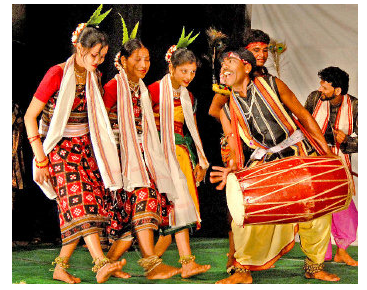DANCE FORMS OF ODISHA
Contents
· Introduction
· Chhau Dance
· Naga Dance
· Ghumra Dance
· Music
Introduction
The state of Odisha is enriched with various forms of art and a multifarious culture. Odissi is the most significant traditional dance form of Odisha and it has also been recognised globally, for charm and exquisite beauty. Chhau has also earned a worldwide reputation for itself among dance connoisseurs.
Chhau Dance
The themes for the Chhau dance are largely inspired and drawn from the Ramayana, Mahabharata and Puranas. Chhau is also known as Phari Khanda Khela (game of swords and shields), as well as Rookmar Nacha (the dance of defence and offence). The postures and stances of this dance form are largely the stances and postures of fighting. Puranic episodes such as Kirat Arjuna, Banshi Chori, Kalanka Bhanjan, Shiva Tandav, Nisitha Milan, Tamudia Krishna, Garuda Bahana, Mahisashura etc. are the most popular themes of this dance form. There are also significant tribal themes, which are incorporated into this dance form such as the themes of Kala Chakra, Sabara Toka and Sabara Sabaruni.
Naga Dance
The Naga dance of Odisha is very bold in appearance and the dancer bears a heroic outlook, with special dresses. The dancer also wields heavy weapons and dances to the battle drumming. The ten main props of the dancer are as follows:
- A shield made from the hide of rhinoceros
- Sword
- Kukri
- Gun
- A whistle in the form of a horn
- Iron shield
- Toilet Box
- Bow and Arrows
- Tiger Skin
- Bell
The other major features of the appearance of the Naga dancers are as follows:
- The bow wielded by the dancer bears the face of tiger
- A long crown decorated with bright peacock feathers and big flowers are worn by the dancers
- The dancer also wears a string of beads on their neck, feathers of Ara bird on their arms and a string of mirror and beads on their wrists.
- A powder known as Rama Raja (yellow in color), is worn by the dancers to save themselves from the scorching heat.
- The dancers wear artificial beards and moustache, and decorate his forehead with vermillion powder.
- The arrows are decorated with flags, handkerchiefs are tied on the hands and small bells are attached to the thighs.
One of the most salient aspects of the Naga dance is that, this dance form is not accompanied by any form of music, except the beating of drums.
Ghumra Dance
Ghumra is a particular variety of drum, which is approximately the size of a pitcher and generates a deep musical sound. The Ghumra is hung on the neck of the drummers, with the support of rope and therefore is easier to play upon. Once the drummer starts drumming the Ghumra, singing and dancing erupts on the scene. These are played and performed on special occasions such as marriages and other social occasions. Sometimes competitions are also held between two parties of twenty to twenty-five dancers.
The other major folk dance forms of Odisha are as follows:
- Jhulki
- Jamudali
- Humo
- Puchi
- Rasarkeli
- Gunjikata
- Mayalajar
Music
Also known as Deshi Sangit, folk music is an essential part in the lives of individuals. There are no established general standards in folk music and the scale, interval and tonality varies from region to region. Folk songs are generally inherited and passed on from generation to generation. Various instruments such as Dhuduki, flute, mandolin, lyre, Nageshwara, Saptaswara, tamborine and harmonium accompany the folk songs. Various new instruments are being added into the accompaniments, to intensify the harmonic and polyphonic requirements. Folk music played on socially significant occasions such as child birth, marriage etc. Thus, folk music is an essential and integral aspect of the lives of the people of Odisha.



